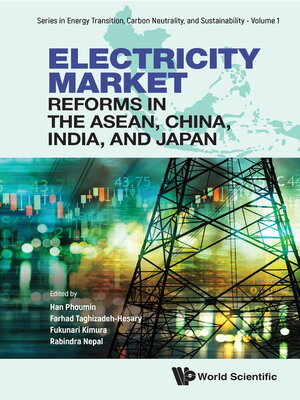Electricity Market Reforms In the Asean, China, India, and Japan
ebook ∣ Series In Energy Transition, Carbon Neutrality, and Sustainability
By Han Phoumin

Sign up to save your library
With an OverDrive account, you can save your favorite libraries for at-a-glance information about availability. Find out more about OverDrive accounts.
Find this title in Libby, the library reading app by OverDrive.



Search for a digital library with this title
Title found at these libraries:
| Library Name | Distance |
|---|---|
| Loading... |
The electricity sector's reforms aim to modernise its infrastructure, rules, policies, and procedures to allow for more efficiency and for clean energy to have the same playing field in the power competition/wholesale/retail electricity market. This will enable inefficient power to be phased out gradually. Over the past 2 decades, there has been remarkable progress in the Association of Southeast Asian Nations (ASEAN) electricity markets that has increased the electrification ratio substantially; however, it has not achieved free market competition, universal electrification, and emission reduction plans. ASEAN aims to achieve universal access to electricity by 2030.Electricity Market Reforms in ASEAN, China, India, and Japan provides 10 empirical studies investigating and evaluating the electricity market reforms in Southeast Asia, China, India, and Japan. The book analyses the electricity market policy reform plans, market liberalisation, tariff reform, electricity trade, renewable energy integration, resource allocation, and the sustainability of the electricity market in the region and these countries. It provides policy recommendations to foster the reforms and increase market efficiency.







